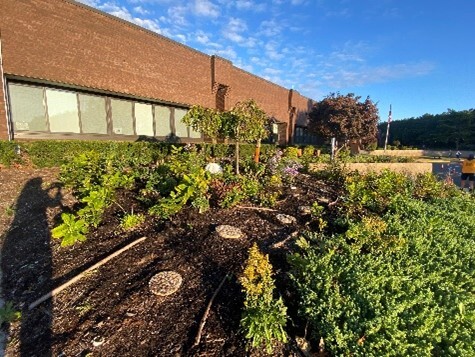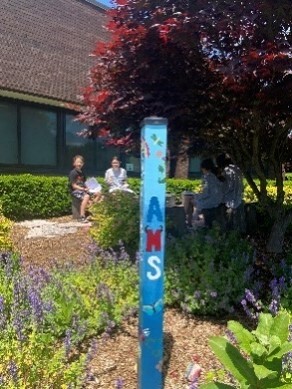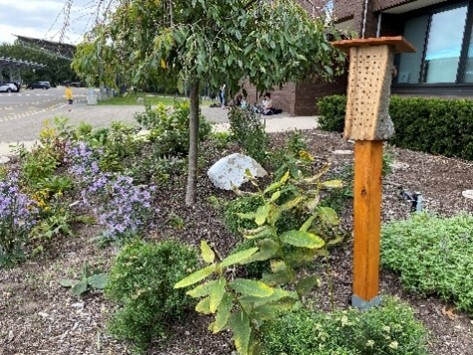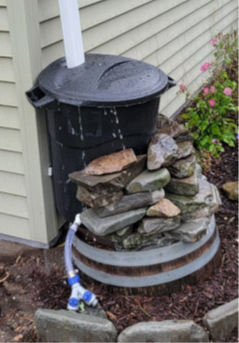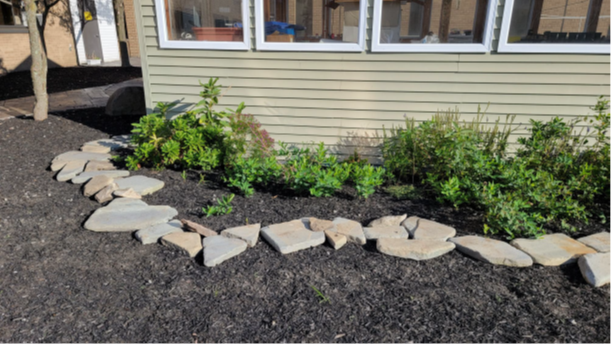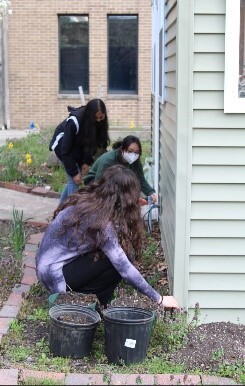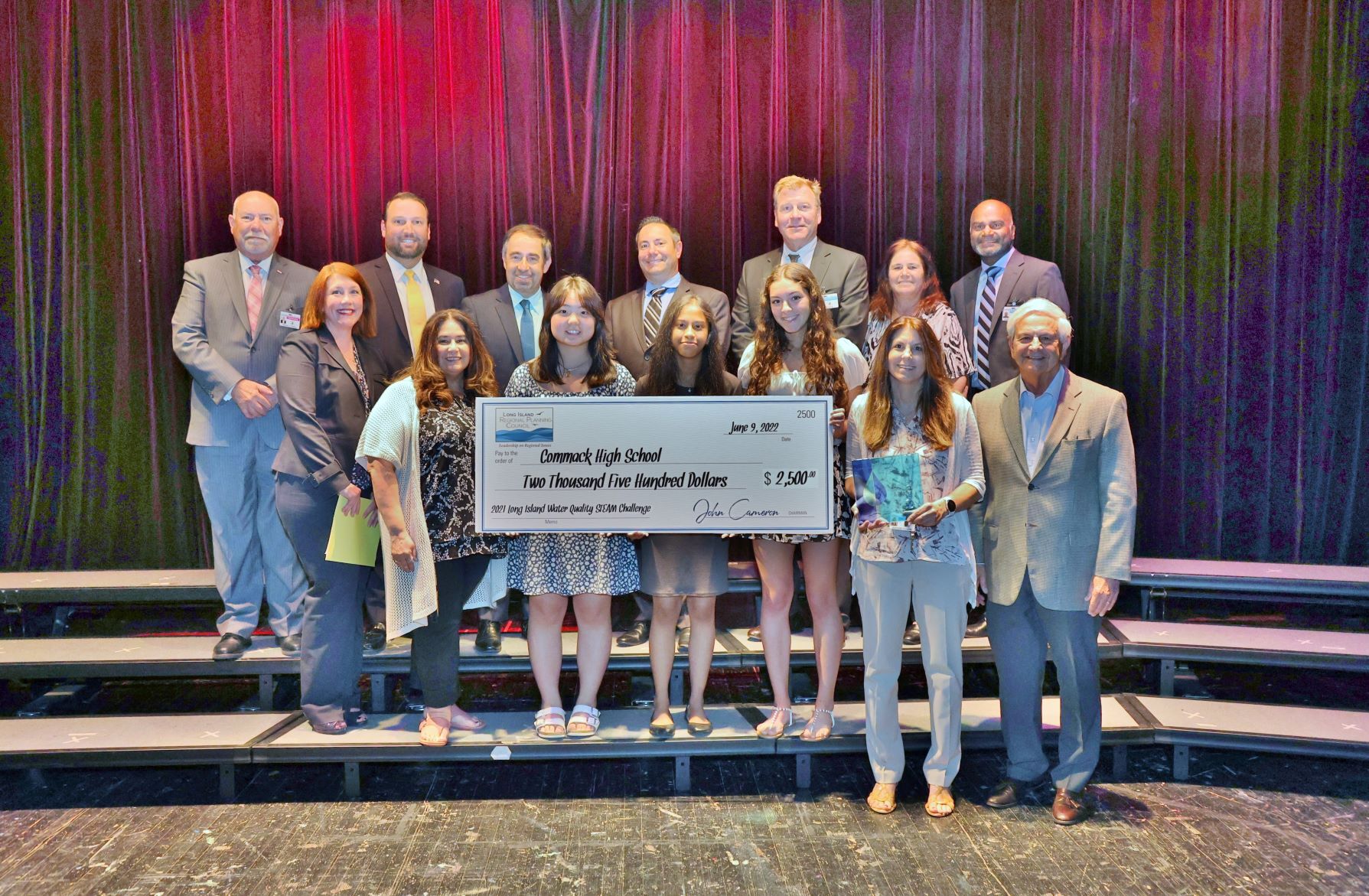Long Island Nitrogen Action Plan (LINAP)- Newsletter
The New York State Department of Environmental Conservation sent this bulletin on 10/17/2023 09:00 AM EDT |
| DEC Delivers - Information to keep you connected and informed from the NYS Department of Environmental Conservation |
Long Island Nitrogen Action Plan (LINAP) - Newsletter
|
|
Nurturing Tomorrow's Environmental Stewards: Five Years of the Long Island Water Quality STEM Challenge This year marks the fifth year of the Long Island Water Quality STEM Challenge which promotes nitrogen related, project-based learning in Science, Technology, Engineering, and Mathematics (STEM) in Long Island schools. This innovative challenge enables students to not just learn about water quality, but to actively engage in addressing the issue. Student teams participating in the Challenge craft green infrastructure projects designed to combat nitrogen pollution via stormwater runoff on their school grounds. Stormwater runoff can transport nitrogen and other contaminants through the watershed and into our coastal waterways. Excess nitrogen in surface waters can cause harmful algal blooms, fish kills, and habitat degradation. Nitrogen also contaminates the groundwater that sustains Long Island's drinking water supply. Fortunately, there are solutions and by participating in this Challenge students and schools can play an important role. Participating teams have a chance to be awarded a $2,500 grant to implement their project. The grant is not merely a prize but an investment in combatting nitrogen pollution on Long Island and nurturing a generation of environmental stewards who understand the pressing need to safeguard Long Island's water quality. In this edition of the LINAP newsletter, we sat down with teachers Amy Olander from Accompsett Middle School (winners in 2019), and Jeanette Collette, and Andrea Beatty from Commack High School (winners in 2021). They provided us with valuable insights into their experiences with the Challenge, shedding light on how their winning projects have made a lasting impact not only within their schools but also within the broader community. Accompsett Middle School For Accompsett Middle School, the path to victory in the Challenge's inaugural year was fueled by a strong interest in experiential learning and the desire to connect classroom education with the local environment. Amy Olander, the lead teacher for the Accompsett Middle School's Science Club, explains that "the idea of a creating a native plant garden to help reduce nitrogen pollution on our school grounds stood out as a fantastic opportunity to blend various STEM concepts. It was a challenge embraced eagerly, with the added enthusiasm of 6th graders who were naturally hands-on learners.” Amy recalls that when the students received the news that their project had won the competition and were awarded a grant to implement it, the students were awestruck. They realized that their hard work and dedication had paid off, and they were thrilled to see their vision become a reality.
Accompsett Middle School: 2019-2020 Inaugural STEM Challenge Winners. Students designed and implemented a native plant and pollinator garden, which serves as an ongoing “classroom” for both middle school and elementary school students. Photo credit: Amy Olander. Since its installation, the native plant garden has profoundly impacted both the school and the surrounding community. It now proudly features informative signage, ensuring that everyone passing by or attending school events is aware of the project's significance. Teachers have integrated the garden into their curriculum, using it as a hands-on learning resource for Science and English Language Arts. Students have engaged in activities like descriptive writing and studying the role of native plants in groundwater management. The garden has not only educated students but also inspired school staff, many of whom have been motivated to incorporate native plants into their own home gardens and promote sustainable practices. The Long Island Water Quality STEM Challenge strives to have this ripple effect and extend the reach of the project beyond the classroom. Additionally, the project sparked heightened interest in STEM subjects and environmental awareness among the students, allowing them to see the real-world applications of what they learn in class and understand the vital role of native plants in supporting local ecosystems. Maintenance of the garden has become a collective effort, with the Science Club students finding great pleasure tending to it. Additionally, custodians, students, and even families have volunteered to help with maintenance, fostering a collaborative spirit that has made the maintenance smooth and enjoyable. “Our native plant garden has given students the opportunity to see how nature can help to solve the nitrogen problem on Long Island,” said Amy. “By getting the students involved in planning and implementing the garden they see how STEM disciplines are used to turn an idea into reality. We are grateful to have this chance to show the community that even small changes in our own yards can help the environment.” Looking ahead, the Accompsett Middle School team has plans to expand their influence, aiming to have a lasting impact on their community by promoting native plant initiatives and further integrating the native plant garden into their school's curriculum and culture.
Accompsett Middle School Award Ceremony. Photo Credit: Long Island Regional Planning Council (LIRPC). Commack High School In 2021, Commack High School students and their dedicated teachers took up the Challenge, leaving an enduring mark on their school and local community. When asked about their motivation to participate, Jeanette Collette and Andrea Beatty, the lead teachers for Commack High School's winning team, emphasize that it was the students themselves who were the driving force. Fueled by a desire to contribute to their community and make a positive environmental impact, these students saw the Long Island Water Quality STEM Challenge as an exciting avenue to apply their ideas to their school's surroundings. “The local focus of the STEM challenge were essential factors that resonated with the students. They were drawn to the idea of working on projects that would be implemented on school grounds, directly impacting their community,” said Jeanette. “The students were inspired by the prospect of addressing nitrogen pollution, recognizing the importance of reducing it for the betterment of their environment.” The students' approach to the STEM challenge involved meticulous planning. They researched various possibilities and collaborated with school facilities personnel to address issues like stormwater management and flooding. The Challenge allowed the students to think creatively, ultimately leading them to select a project with visible and lasting impacts-- the creation of a native plant garden and rain barrel installation.
At Commack High School, a rain garden and rain barrels encircle the school’s existing greenhouse in the main courtyard to serve as a natural habitat for pollinators and to filter stormwater runoff. The garden provides ongoing educational opportunities for the student body and greater community. Photo credit: Jeanette Collette. “Our kids looked at the problems within the area of our school and started with stormwater drains and flooding. Then they looked at the costs,” said Andrea. “I think they designed a project that really did make the most impact on the school. And it's very visible and it's something that all our students ask about. Small actions can have a big impact. And I think that that's what they really took away from it.” Local experts donated their time to aid the students and school personnel in the installation. The project has become a testament to the power of community collaboration. According to Jeanette and Andrea, one of the remarkable outcomes of this project was its ability to inspire fellow students. The students who designed and created the project emerged as role models for their peers. As a result, more students developed an interest in environmental topics, nitrogen pollution, and STEM-related projects. The impact extended to the curriculum, with the inclusion of the project in classes like IB Biology, Life Skills, Chemistry and extracurricular activities like the Environmental Club and the Garden Club. Notably, the project played a vital role in raising awareness among the school administration about critical issues on the school’s property. There is now a broader initiative currently underway to improve the school's infrastructure and tackle pressing concerns like flooding--problems identified by the students during their research for the Long Island Water Quality STEM Challenge. Looking ahead, the school is enthusiastic about participating in future STEM challenges. The students' enthusiasm for projects beyond the classroom continues to drive their commitment to making a difference.
Commack High School STEM Challenge Award Ceremony. Photo Credit: Long Island Regional Planning Council (LIRPC). By merging their innovative thinking and a passion for the environment, these two STEM Challenge winners transformed their school's landscape and cultivated a culture of environmental awareness and community engagement. Their experience serves as a reminder that even small actions can yield big results. The Long Island Water Quality Challenge is not just a STEM competition; it's an experience that molds future leaders in environmental stewardship who are shaping a more sustainable Long Island. This year’s Challenge is now open! To learn more about the program and how to participate visit: LIRPC Long Island Water Quality STEM Challenge. Letters of Interest are due on November 13, 2023, and can be emailed to Rachel Titus at rtitus@lirpc.org. To sign up for the LINAP newsletter, visit our webpage or click here. |

